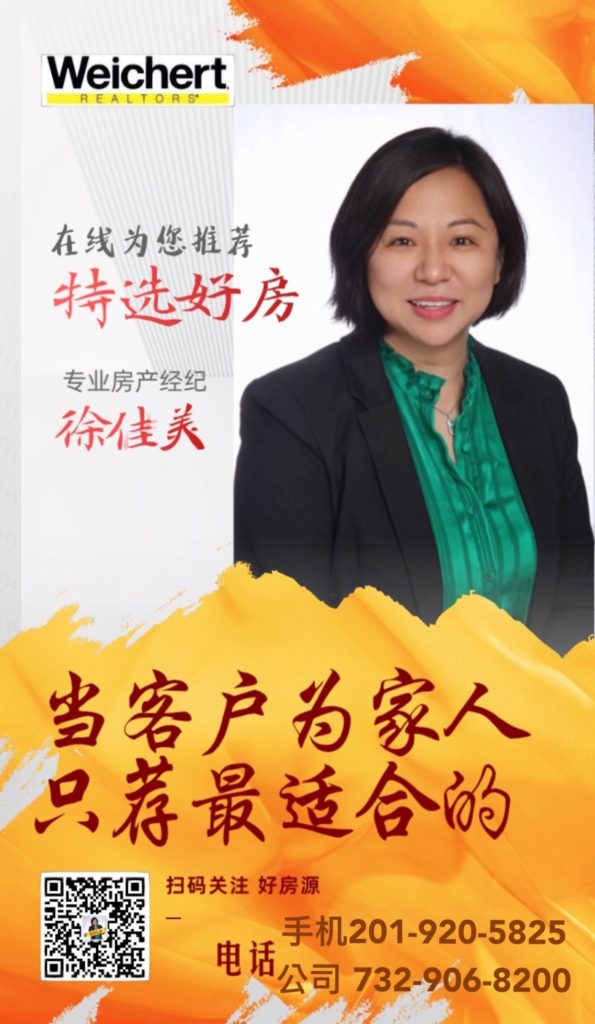
乌克兰战争,带给世界的10个严重后果!
牛弹琴
02/24/2022

毫无疑问,这是改变世界的一天:2月24日,乌克兰战争爆发。战争还在残酷继续,不断有人倒在血泊中。我之前就说过,我对局势很悲观,因为所有的态势,已经很清楚地表明,战争必然会发生。
更何况,对手是普京。
具体细节和进展,就不多说了。看到很多西方领导人说,这是二战后欧洲最黑暗的一天。也许是吧。但更准确地说,这是第二次,第一次是1998年的空袭南联盟,打开了战争的魔盒。普京不过是依葫芦画瓢。
现在最关键的,不是战争,战争结果已没有悬念,而是后果,后果非常严重,影响波及全世界,也包括远离战场的我们。
完全个人观点,十个严重后果。
后果一,全球股市崩盘震荡。
2月24日,全球震动最剧烈的地方有两个,一个是乌克兰战场,真枪实炮地干;另一个是全球股市,真金白银地亏。
反正,战争开始,全球股市大跌,A股跌成狗,日股比狗惨,德股英股不忍看,俄罗斯股市更是全线崩盘。俄罗斯RTS指数,一度跌幅超过50%,也就是说,所有股票,全线腰斩;手中财富,一半归零。
你就可想而知,这有多么惨烈。以至于很多A股同学感叹,看这股市跌的,感觉是拿我的钱在打乌克兰。全球化时代,战争的影响,也是全球性的,谁都逃不掉。
但股市也是最诡谲的地方。2月24日,纳斯达克开盘,大跌3.45%;但到收盘时,大涨3.34%。俄股在哭泣,美股在狂笑。如果一定要解释,就是那句股市古话吧:大炮开打时买入,和平号角吹响时卖出(Buy on the sound of cannons, sell on the sound of trumpet)。
未来几天,全球市场,肯定还将上蹿下跳。有人在贪婪中恐惧,有人在恐惧中贪婪。
后果二,国际油价金价暴涨。
涨得让人心颤。反正,时隔7年半之后,国际油价又突破了100美元/桶。黄金也卖疯了,A股很多黄金股涨停,国际金价也是全线暴涨。
这可能也是普京最有底气的筹码之一。
之所以是之一,因为他至少有两个,一个是核武器,他吃准西方不敢出兵,直接和俄罗斯打仗,因为俄罗斯的核武器,不是闹着玩的;另一个就是石油,战争是大把花钱,西方制裁俄罗斯也会巨亏,但油价在暴涨。
最倒霉的是石油消费大国。看到美国人就感叹:这场战争,俄罗斯获得了更多土地,美国人获得了更高油价。
战争如果持续,大宗商品价格还会升高。今年的物价,有点悬。

后果三,不仅仅是人道主义灾难。
让人一声叹息。
乌克兰,一片多么富饶的土地,欧洲的粮仓。想当年在苏联,乌克兰是仅次于俄罗斯的老二,但苏联解体30年,国家分裂,山河破碎,战乱不止,现在又沦落到这种境地,究竟是谁的过错?
但乌克兰人民,却在寒风中哭泣。
奥地利总理内哈默就透露,战争爆发后,乌克兰总统泽连斯基和他通电话,告诉他:“我不知道我的国家还能存在多久。”
难民正从各个方向,逃离乌克兰。看到有些预测,这场战争,可能会导致5万人死亡,500万人沦为难民。
大批难民会涌入俄罗斯,更多会涌入欧盟。
短期看,这会是一次人道主义危机,欧盟将背上沉重的包袱;长期看,甚至可能导致人口版图的变化,大批乌克兰难民,将为欧洲民粹主义和排外主义提供肥沃的土壤,进而改变欧洲政坛。

后果四,俄罗斯会咬紧牙关苦撑。
西方不会出兵,也不敢出兵。但剩下的选择,除了谴责俄罗斯,就是制裁。
虽然之前已经制裁了俄罗斯100多次,但现在,俄罗斯将遭遇史上最严厉的一次。俄罗斯在西方的资产会全部冻结,俄甚至会被驱逐出国际金融体系……
战争爆发后,普京会见工商界,也坦言:无法预测所有潜在风险,“我们所有人,也包括你们,要了解我们所生活的世界,并用这样或那样的方式,为现在正在发生的限制和制裁政策做好准备”。
一边是占世界GDP一半以上的西方国家,一边是只占2%的俄罗斯,经济力量的悬殊,将让俄罗斯承受泰山压顶的压力。
接下来几年,俄罗斯将不得不咬紧牙关苦撑。撑过去了,俄罗斯就否极泰来;撑不过去,那就是新的危机,甚至是更大的危机。
后果五,更激烈的消耗战割喉战。
俄罗斯会坐以待毙吗?
肯定不会。这将是更激烈的合纵连横,西方有盟友,俄罗斯也不乏小伙伴。当然,更重要的,咬紧牙关的俄罗斯,也不乏反制手段。
哪怕限制西方民航飞越俄罗斯领空,就会彻底搅乱整个民航市场;更别提,俄罗斯手里,还有欧洲需要的天然气和石油。
这将是一场消耗战,欧洲政治也是复杂的,不排除出现亲俄的势力和领导人,俄罗斯将会抓住机会,从而分化欧洲之间和美欧之间的矛盾。
俄罗斯的斗争策略,也将是无情的。这是一场长时间的割喉战,一旦俄罗斯觉得已无所失去,世界又会怎么样?

后果六,彻底改写欧洲地缘政治。
本来,乌克兰已经倒向西方,申请加入北约和欧盟。但现在,随着俄罗斯坦克的进驻,进程戛然而止。
这是欧洲最后一次改写边境线吗?我想,没有人会天真地这么认为。
要知道,俄罗斯拥有欧洲最大的常规军队,随时可以投入使用。恐惧之下,爱沙尼亚、拉脱维亚、立陶宛、波兰和罗马尼亚在内的东欧成员国,可能会要求大量北约部队进驻其领土。
甚至不排除,芬兰和瑞典未来要求加入北约。
那就意味着,俄罗斯军队和北约军队将更加近距离的接触。缺少了缓冲区,这个世界是更安全了,还是更危险了?
后果七,西方不得不再次战略调整。
这可能是我们最无语的地方。
一次又一次,美国和西方希望集中对付中国,将越来越多资源转移到亚洲;一次又一次被狠狠打脸,因为最大的威胁,根本不是中国。
乌克兰战争,美国将不得不进行新的战略调整,派遣更多军队到欧洲,集中更多资源制裁俄罗斯。正如同911事件后,美国不得不进行战略调整,因为那时最重要的敌人,不是中国,也不是俄罗斯,而是恐怖主义。
至少短期内吧,西方的头号敌人,肯定是俄罗斯。当然,我们也别太乐观,西方政客说变就变,也不排除一段时间后,又和俄罗斯达成某种默契,牺牲乌克兰,然后再次转身对付东方大国。
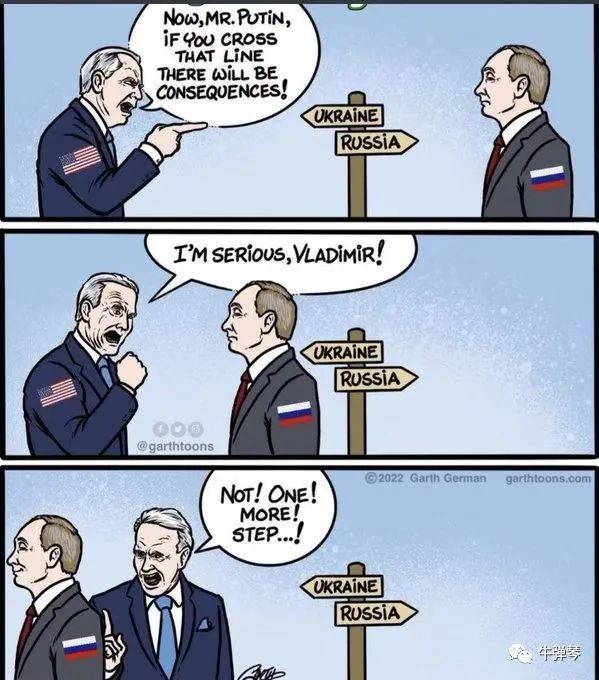
后果八,西方心态的剧烈变化。
心态肯定有剧烈变化。
以前北约步步东扩,感觉势在必得。布热津斯基在《大棋局》中就扬言:“一个扩大和民主的欧洲必须是一个没有尽头的历史进程,不应受在政治上任意涂抹的地理的限制……对美国来说,俄国实在太虚弱了,不配成为伙伴;但如果只是作为美国的病人,俄国又太强壮了。”
但结果呢?
几十年后显现了,憋屈的俄罗斯,不按常理出牌了,干脆选择了战争。用普京的话说,俄罗斯已没有选择,必须捍卫自己的安全。
将一个大国逼到绝地的严重后果,其他国家必须仔细掂量。
世界看到了西方国家的色厉内荏。东欧国家心态更会变化,有的谨慎,有的更加恐俄仇俄。
其实,当年韩非子就曾有过一句格言:国小而不处卑,力少而不畏强,无礼而侮大邻,贪愎而拙交者,可亡也。
这肯定不符合历史正义,但,这就是丛林政治的残酷现实。尤其是东欧国家,感受更加强烈。
后果九,欧美矛盾最终会爆发。
现在看似是铁板一块,但最终肯定会爆发矛盾。
其实,对这次乌克兰战争,美欧态度就有微妙差别。法国和德国是真不想打,马克龙更是马不停蹄,外交斡旋跑了一趟又一趟。美英看似不想打,但多少还有隔岸观火,鼓动乌克兰的地方。
其中英国,更不乏窃喜。脱欧后正为前景发愁,乌克兰战争一打,油价大涨利好北海石油;欧洲告急,伦敦将是欧洲资本转移的首选,英国,是最大赢家。
但随着时间的推移,美英可以继续唱高调,继续大棒挥舞,但法德必须考虑自身安全,还有经济利益。俄罗斯也不是省油的灯,更不会忘记及时给欧美分歧送一些养料。
你看吧,最终,美欧在俄罗斯问题上出现激烈分歧,俄罗斯迎来喘息之机。

后果十,世界看到中国的难得和可贵。
这个世界,有比中国更遵守国际规则的大国吗?有比中国更尊重其他国家主权的大国吗?有比中国更珍视和平的大国吗?
答案,就两个字:没有!
昨天外交部记者会,华春莹有句话就说得非常好:在如何尊重国家主权和领土完整上,美方恐怕没有资格来告诉中方怎么做……中国也还是唯一一个还没有实现祖国完全统一的安理会常任理事国。
这个话,值得有些人好好体会。
对西方来说,中国一不输出革命,二不输出饥饿和贫困,三不折腾你们,还有什么好说的。
对全世界而言,中国努力发展自身经济,推出“一带一路”倡议,提出全球发展理念,真是一个负责任的大国。
中国是一个超级模范生。一个又一个事实,会让世界越来越清楚地看到这一点。当然,世界那么多惨痛教训,也需要中国更加冷静、更加清醒,千万别骄傲,千万别折腾。
毕竟,战争的胜利,永远不会是永远。随着时间的推移,国家发动和赢得错误战争的行为,往往会击败自己。

【视频】全球十大富豪疫情期间财富翻倍
联合早报
02/13/2022
冠病疫情让贫富差距加大,但具体情况有多严重?乐施会最近的一份报告,用数字量化了全球穷人和富人之间的财富鸿沟。
全球十大富豪疫情期间每天进账几亿?他们的财富加在一起要多久才能花完?富豪榜单上有哪些新面孔?什么行业是最新造富摇篮?点击视频了解详情。

全球102名百万富豪联名呼吁各国政府即刻征收财富税
来自 / 联合早报 | 整理 / 李月霞
01/19/2022
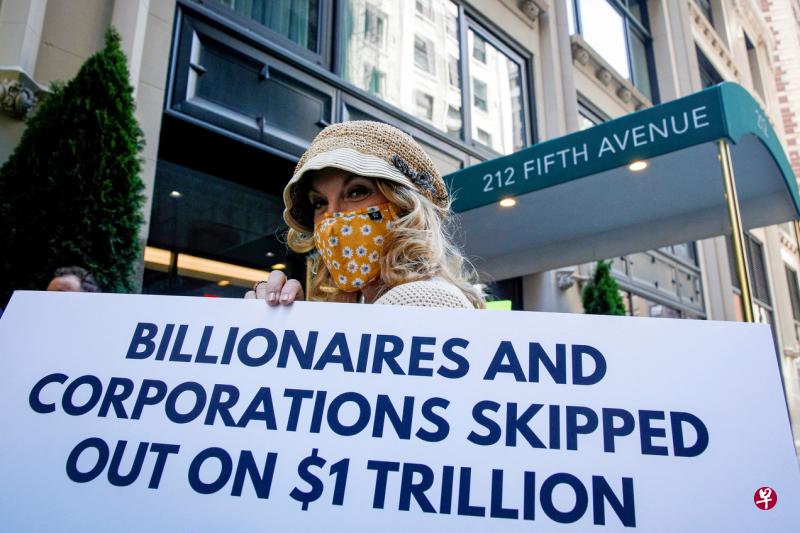
(苏黎世综合电)据估算,如果向全球顶尖富豪征收“富人税”,每年至少可获得2.52万亿美元(3.40万亿新元),足以资助每个人接种冠病疫苗,并帮助23亿人脱贫。
消除不平等联盟、慈善机构“乐施会”、总部设在美国的“政策研究所”和“爱国百万富豪”等组织近日联手展开一次调研,他们昨天发布报告,主张以累进税率向富人征税。他们的研究显示,对500万美元以上的财富征税2%,5000万美元以上财富征税3%,10亿美元以上财富征税5%,可以筹集2.52万亿美元,这笔钱除了可让23亿人摆脱贫困之外,还可为中低收入国家的36亿人提供全民医疗和社会保险。
该调研报告指出,如果向亿万富豪的10亿以上财富征收10%的税,那每年可获得的富人税就可达3.62万亿美元。
“爱国百万富豪”组织的102名成员包括迪士尼继承人阿比盖尔(Abigail Disney)昨天发出公开信,向出席世界经济论坛的政界领袖发出呼吁,要政府现在就向他们征收财富税。他们指出,现行的征税制度不公平,是为“让富者更富”而设计的。“世界应该要求富者支付他们应当承担的税额……对我们这些富者征税,现在就对我们征税。”
联署的富豪来自美国、加拿大、德国、英国、丹麦、挪威、奥地利、荷兰和伊朗等国。
日前一份独立报告显示,在冠病疫情蔓延的这两年里,全世界最富有的那群人变得更加有钱。乐施会本周发布的一项研究显示,世界前10名首富的财富已经翻倍至1.5万亿美元,即每秒增加1万5000美元。
消除不平等联盟全球召集人珍妮·瑞克斯在声明中说:“在冠病疫情期间,数十亿人每天为生存苦苦挣扎,亿万富豪的财富却失控般飙升,这是不对的。”
据了解,除了少数一些国家,多数地方的富人不必每年为房地产、股票或艺术品等资产缴税,只在资产出售时才纳税。
世界经济论坛:可参考瑞士财富税模式
世界银行去年发表一篇文章,敦促各国考虑征收财富税,以帮助减少不平等,补充因国民支援计划而耗尽的国库,并重新获得社会信任。
世界经济论坛发言人说,征收公平的税款是论坛的宗旨之一。论坛总部所在地瑞士所征收的财富税,可能是其他地方可采纳的一个很好的模式。
White House: 400 wealthiest families paid average tax rate of 8.2 percent
BY NAOMI JAGODA
9/23/2021
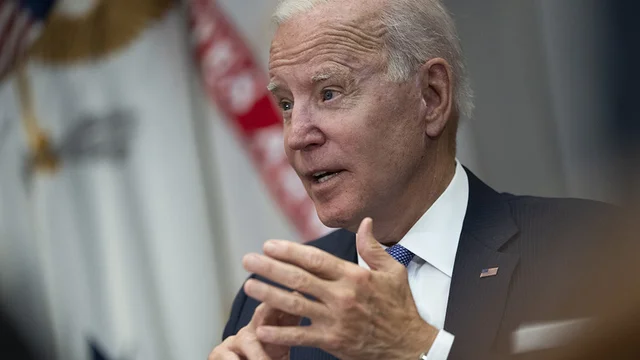
The White House released an analysis on Thursday estimating that the 400 wealthiest American families paid an average federal income tax rate of only 8.2 percent on $1.8 trillion of income from 2010 to 2018.
“Two factors that contribute to this low estimated tax rate include low tax rates on the capital gains and dividends that are taxed, and wealthy families’ ability to permanently avoid paying tax on investment gains that are excluded from taxable income,” the report said.
The analysis, which was authored by economists from the White House Council of Economic Advisers and the Office of Management and Budget, comes as Democrats in Congress are working on a tax-and-spending package that would advance much of President Biden‘s agenda. Biden has proposed a number of tax increases on the wealthy and corporations in order to pay for his spending priorities in areas such as health care and child care, and he is seeking to prevent moderate congressional Democrats from scaling back these proposals.
The White House analysis is based on IRS statistics, the Federal Reserve’s Survey of Consumer Finances, and Forbes magazine estimates about the 400 wealthiest Americans.
The White House noted that its estimate of the tax rate for the wealthiest households is “much lower” than other groups’ estimates of top income tax rates. The administration’s takes into account income from unrealized capital gains, which is not typically included in this type of analysis.
The report highlighted Biden’s proposals to raise the top capital gains rate and end the “stepped-up basis” tax preference that benefits heirs as ways to address the fact that wealthy Americans pay a low tax rate.
Legislation approved by the House Ways and Means Committee earlier this month included a smaller capital gains increase than Biden had proposed and does not repeal stepped-up basis. But Senate Democrats are expected to offer their own ideas for how to pay for the spending package, and Finance Committee Chairman Ron Wyden (D-Ore.) has indicated that he wants to prevent billionaires and their heirs from avoiding taxes on stock gains.
Wyden said in a statement Thursday that “the White House’s new report is shocking but not surprising.”
Top 1 Percent Avoid Paying $163 Billion in Taxes Each Year: Treasury Department
By Leia Idliby
9/08/2021
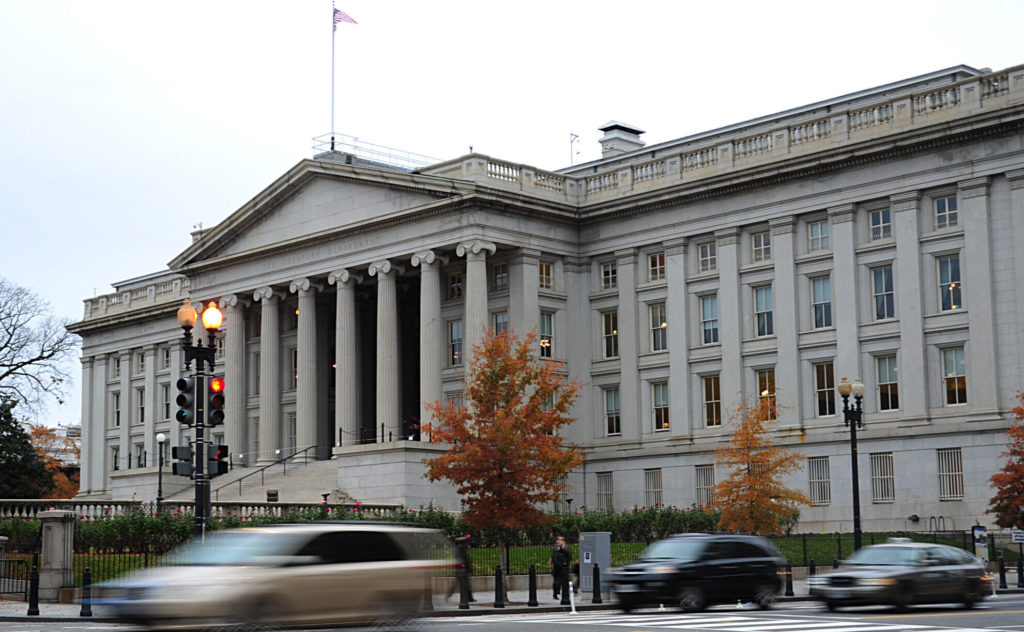
The Department of Treasury has found that the wealthiest one percent of Americans have avoided paying $163 billion in taxes per year.
The Treasury’s analysis, titled “The Case for a Robust Attack on the Tax Gap” and written by Deputy Assistant Secretary for Economic Policy Natasha Sarin, opens by explaining, “A well-functioning tax system requires that everyone pays the taxes they owe.”
The report argues that narrowing the tax gap, which accounts for the difference between owed and collected taxes, will lead to a more equitable economy, as it currently “totals around $600 billion annually,” which would lead to “approximately $7 trillion of lost tax revenue over the next decade.”
Sarin’s report includes a table detailing tax data from 2019, which ultimately found that more than $160 billion lost annually is “from taxes that top 1 percent choose not to pay.”
The report goes on to argue that in order to collect owed taxes and enforce laws against high earners and corporations, the IRS needs funding to update their technology and to hire agents able to decipher “thousands of pages of sophisticated tax filings.”
“It also needs access to information about opaque income streams — like proprietorship and partnership income — that accrue disproportionately to high-earners,” she wrote.
The reports comes as President Joe Biden’s administration is pushing for a significant increase to the IRS budget. The White House has specifically called for $80 billion of investment over the next ten years, claiming it would help the government catch tax evasion schemes.
“Giving the IRS the information and resources that it needs will generate substantial revenue,” Sarin concluded. “But even more importantly, these reforms will create a more equitable, efficient tax system.”
Top 0.1% Tap Private Placement Life Insurance to Avoid Biden’s Taxes
Financial Advisor IQ
9/04/2021
The richest Americans who want to avoid paying higher taxes under President Joe Biden are tapping a niche product that has become more generally available, cheaper and flexible in recent months.
Some advisors who cater to the top 0.1% say that private placement life insurance is “dominating conversations,” according to Bloomberg.
Assets held in PPLI policies are tax-free, and when a policyholder dies, their heirs inherit the policy’s contents tax-free, Bloomberg writes. Assets inside a PPLI can also be brorrowed against or rolled into another insurance product, according to the news service.
PPLI policies, however, have complicated rules to qualify as life insurance to take advantage of the tax benefit, can fail if not properly funded and taking assets out comes with a heavy tax burden, Bloomberg writes.
“Clients are very interested in this right now,” said Tara Thompson Popernik, director of research for Bernstein Private Wealth Management’s wealth planning and analysis group, according to Bloomberg. “It takes some education to get them to wrap their heads around the concept, because it’s not just buying life insurance.”
But it’s not just the threat of Biden going after billionaires and millionaires to pay their “fair share” that’s making the loophole: a late-2020 insurance law change made PPLI “more powerful,” while competition among insurers has pushed down costs while increasing the choice of products, according to Bloomberg.
“Private placement life insurance poses a serious obstacle to President Biden’s goal of guaranteeing that high-income individuals pay tax on large gains at least once per lifetime,” said Daniel Hemel, a law professor at University of Chicago, according to the news service. “PPLI is a massive loophole — entirely legal, easy to exploit, and politically very hard to close.”
How Does Private Placement Life Insurance Work?
By Maxime Croll
9/04/2021
Private placement life insurance (PPLI) is a niche solution designed for wealthy individuals in high tax brackets who have a few million dollars available to commit.
Many times, those for whom PPLI was designed want to invest in hedge funds, but hedge funds can carry significant taxes: If the wealthy individual invests in them in their personal name, in a taxable account or in a trust, every trade the manager makes can generate a capital gains distribution, and any ordinary income is taxable at particularly high rates.
That’s a serious issue at higher income levels, where combined federal and state income and capital gains taxes can easily add up to nearly 50% in some jurisdictions.
One increasingly popular solution: Hold these assets within a life insurance policy.
Who does private placement life insurance make sense for?
PPLI isn’t for everybody. A good candidate for this strategy is someone with annual income in the millions, a net worth of $20 million or more or someone who controls a business that puts them in that category.
Life insurance comes with a number of important tax benefits, which can be major considerations for those in the highest tax brackets. But standard life insurance policies you can get from your neighborhood agent don’t contain the hedge funds, funds of funds and other alternative investments that these investors require for their own diversification and investment needs.
That’s where privately placed life insurance comes in: Wealthy families, family foundations, trusts, corporations and banks work with hedge funds and money management firms to create their own life insurance contracts, designed to reduce their tax burdens.
The idea is to combine the financial advantages of highly taxed hedge funds and similar investments with the tax advantages of life insurance. There are insurance and administrative costs associated with the life insurance contract, but the tax savings in a properly structured life insurance policy, plus the death benefit itself, more than make up for the additional insurance and administrative costs. And the insured can generally access most of the funds anyway, tax-free, via policy withdrawals and loans.
When a wealthy investor in a very high tax bracket wants to invest in hedge funds anyway, it often makes sense to create a privately placed life insurance policy to shelter the individual from taxes.
Qualifications to purchase PPLI
While anyone can buy a variable universal life insurance policy (as PPLIs are structured), PPLIs are an unregistered securities product. As such, agents can only present them to accredited investors.
Under current Securities and Exchange Commission (SEC) regulations, accredited investors are those with a net worth of at least $1 million (excluding primary residence), or income of at least $200,000 in each of the preceding two years. Married couples must demonstrate income of $300,000 in each of the preceding two years.
Ultimately, the owner is typically an individual or a trust. Holding the policy in an irrevocable trust allows the insured to keep the policy out of their taxable estate, possibly reducing eventual estate tax liability, though they give up rights to access the cash value prior to death.
In reality, the typical PPLI candidate or family has:
- A high net worth
- The ability to fund $1 million or more in annual premiums for several years, at least — $3 million to $5 million is typical
- A desire for hedge fund or alternative investment exposure
- Highly tax-inefficient investments
- High state and local income taxes in addition to federal (advisors should be alert to the effect of any state premium taxes on the strategy)
- A desire to shelter assets from creditors
It’s important to be able to make a significant investment over the first several years as this initial investment of premium “primes the pump,” meaning that, assuming the underlying investment subaccounts perform adequately, the insured’s policy can become self-funding. That is, growth in its cash value covers the cost of insurance. At that point, the insured can cease committing premium if they choose.
Where to buy private placement life insurance
Professional wealth managers tend to recommend vendors. However, some of the most prominent providers of PPLI services and insurance-dedicated funds (IDFs) include BlackRock, Wells Fargo Private Banking, John Hancock, Zurich, Crown Global and Pacific Life.
How private placement life insurance works
Privately placed life insurance is generally structured as a variable universal life insurance policy, meaning:
- Premiums are flexible. Policyholders can pay as much or as little premium as they like, whenever they like.
- The cost of insurance is deducted from the cash value in the policy subaccounts each month or each year.
- To keep the policy in force, the owner must pay enough premium to maintain enough cash value to cover the cost of insurance.
- If the cash value reaches zero, the policy will lapse.
The agent who sets it up will usually structure the policy to maximize cash value accumulation while keeping the death benefit (and thus the cost of insurance) relatively low. The policy owner, working with their insurance professional, then pays as much premium into the policy as possible every year.
The client gets the benefit of the tremendous tax advantages of the life insurance contract:
- Tax-free death benefits to heirs
- Tax-deferred growth of cash value
- Tax-free growth of dividends (if applicable)
Meanwhile, the insured still has access to accumulated cash values, which can be used for any purpose and accessed at any age. There are no penalties for accessing the cash value before turning age 59 1/2, as there are with annuities and with individual retirement accounts (IRAs). In addition, there are no required minimum distributions, as there are with annuities, IRAs and retirement accounts.
PPLI investments
As discussed, the best investment candidates for a PPLI policy are those that are tax-inefficient. They generate substantial current taxable income, imputed (phantom) income or capital gains unless they are held in a retirement account or life insurance vehicle that provides tax-free growth.
PPLI owners and their advisors either choose specific investments for their portfolios or carefully select money managers to manage their portfolios within the policies. Possible investments can include venture capital, real estate investment trusts, private equity funds, funds of hedge funds and commodity funds, or any fund with extremely high turnover rates that generate substantial short-term capital gains.
But that doesn’t mean anything goes. PPLIs must still meet IRS standards for investor control, insurance and diversification.
Investor control. Individual policy owners and family offices are prohibited from exercising influence over the specific investment decisions of the fund managers. If the owner exercises too much control, the IRS may disqualify the tax advantages of the policy. Current case law requires managers to operate on an independent, discretionary basis. Assets held in PPLI policies are not designed to be separately managed accounts, and they should not be treated that way.
Insurance standards. The life insurance structure allows owners to sell insurance-dedicated funds within the policy as often as they like and replace them with other qualified investments, without tax consequences. IDFs are financial products that are designed specifically for the PPLI market. Hedge funds and funds of funds often create a version of their flagship offering as an IDF that uses all the same strategies and managers but is also managed to adhere to laws and regulations that govern insurance portfolios.
Diversification requirements. Investments must also meet diversification rules:
- No single investment may make up more than 55% of the insurance subaccount portfolio.
- No two investments may constitute more than 70% of the portfolio.
- No three investments may constitute more than 80% of the portfolio.
- No four investments may constitute more than 90% of the total assets of the account.
Therefore, the portfolio must, in practice, contain a minimum of five distinct investments in order to fully qualify as life insurance. Otherwise, the IRS will disqualify the policy, and the owner will lose the tax advantages of the life insurance structure.
Accessing your money in a PPLI
Policy owners can withdraw from their cash value or borrow against it at any time, for any purpose.
Withdrawals Withdrawals are tax-free up to the basis of the policies. So owners can get back their premiums, minus fees, without tax consequences — as long as their subaccounts’ performance has kept up with the cost of insurance. If the cash value is greater than the owner’s basis in the policy — that is, what they have paid in — then additional withdrawals in excess of basis are taxed as a gain.
Policy loans You can borrow against the cash value of the policy with no underwriting or credit check. The loan is secured by the policy’s cash value. This makes the policy a solid choice for emergency funds. The loan does not have to be paid back, though the policy owner may want to replenish funds borrowed from the policy so as to maximize long-term tax-free growth.
Because the loans are secured by payments already made to the insurer, interest rates are often very low. Borrowers should be aware that interest does accrue, and borrowing will reduce any death benefits paid out unless the loan is paid back to the policy.
Contribution limitations and modified endowment contracts
The government imposes limits to how much premium the owner can contribute to the policy in a given year in order to help ensure life insurance is used for its intended purpose, as opposed to a tax shelter. The result of the contribution limit is the “seven-pay” test. If policyholders contribute so much premium to their policies that the policy would be paid up in less than seven years, it becomes a modified endowment contract (MEC). This will disqualify the policy from many of the tax advantages on withdrawals and loans:
- One of the great things about insurance policies is that when you withdraw cash value from an in-force life insurance policy, you get the benefit of first-in, first-out (FIFO) taxation. This allows you to withdraw as much as you’d like, up to your basis in the policy (the amount you have contributed), tax-free. If your policy becomes an MEC, this advantage disappears. Instead, the IRS will deem you to be withdrawing interest first, not your basis. This interest is taxable.
- Likewise, while the law allows you to take tax-free loans from a life insurance policy, once your policy becomes an MEC, those loans become taxable as income.
- Additionally, once your policy becomes an MEC, any withdrawals prior to age 59 1/2 become subject to a 10% early withdrawal penalty, just as with a qualified annuity or a 401(k).
Your policy documents should specify the annual MEC limit.
| Life insurance contract | MEC | |
|---|---|---|
| Premiums | Limited by seven-pay test | Not limited except by contract |
| Loans | Tax-free for life of policy | Taxable as income |
| Withdrawals | Tax-free up to basis (FIFO) | Taxable until all interest/gains are withdrawn |
| Death benefit | Tax-free | Tax-free |
| Death benefit amount | Usually kept small in PPLI to maximize growth of cash value | Used to maximize death benefit |
How are PPLI policies different from retail life insurance?
Structurally, privately placed life insurance is identical to a conventional variable universal life insurance policy. What sets the PPLI apart is the assets held in the subaccount: An everyday retail customer will choose from a limited menu of subaccount investments offered by the life insurance company.
But when you buy a PPLI, you can customize your investment subaccounts. You can include nearly any investment imaginable — from index funds to hedge funds. Your registered investment advisor or wealth manager can help design the investments in your menu of subaccounts.
Tax and other benefits of PPLI
High-income individuals are very tax-sensitive. The ordinary income tax rate on incomes above $518,401 in 2018 was 37%, plus additional Affordable Care Act taxes on high-income individuals. When you add in state and local income taxes in some jurisdictions, the income tax bite for high-income families could add up to nearly 50%.
The heart of the PPLI strategy lies in the tax advantage. The PPLI essentially converts a very tax-inefficient investment, such as a hedge fund, into a very tax-efficient one for the high-net-worth investor.
| Hedge fund held in personal account (typically) | Hedge fund held within a PPLI | |
|---|---|---|
| Death benefit | N/A | Tax-free death benefit |
| Income | Taxable at 37%-50% | Tax-free for life of policy |
| Short-term capital gains | Taxable at 37%-50% | Tax-free for life of policy |
| Long-term capital gains | Taxable at 20% | Tax-free for life of policy |
| Imputed income | Taxable at 37%-50% | Tax-free for life of policy |
| Transfers to other life policies | Taxable, gain over basis | Tax-free under IRC Section 1035 |
| Transfer to annuities | Taxable, gain over basis | Tax-free under IRC Section 1035 |
| Creditor protection | None | Enhanced |
| Estate tax treatment | Taxable unless in irrevocable trust | Taxable in estate of owner unless in irrevocable life insurance trust |
| Tax loss harvesting strategies | Investors can sell losers to offset capital gains | N/A, though losing policies can be surrendered |
| Treatment at death | Subject to probate | Bypasses probate — death benefit goes to beneficiaries in a matter of days |
This strategy neutralizes the impact of current income by placing the assets within a life insurance policy, with tax advantages similar to a Roth IRA. Assets within the policy enjoy tax-free growth for as long as they remain in the policy.
In addition to the tax benefits that generally accrue to life insurance cash values, PPLI policies often provide a number of additional benefits:
- Lower commissions. The cost of insurance and commissions is low compared to most retail life insurance products: Issuers are more interested in managing your money than in generating large upfront commissions.
- No surrender charges. Because they don’t rely on a commission-paid insurance sales force as traditional insurance companies do, they don’t need to recoup commission costs by imposing surrender charges.
- Phantom income is not taxed. Some investments generate a tax liability to the owner, even though there is no actual cash income distributed. For example, a zero-coupon bond pays no income until it matures, but the IRS forces taxpayers to pay taxes on imputed income as the bond approaches maturity. If the asset is held in a PPLI, the tax on imputed or phantom income is neutralized.
- Tax compliance is easier. Tax reporting is a constant headache for hedge fund investors and those who hold interests in limited partnerships and master limited partnerships. By holding these assets within a PPLI, the taxpayer can eliminate having to deal with K-1 reports and other reporting requirements.
- Creditor protection. Cash value life insurance is a proven way to shelter assets from creditors. Life insurance and annuities enjoy substantial asset protection in every state, and in some states, like Florida and Texas, creditor protection is unlimited. In some cases, PPLI life insurance assets are held offshore — placing these assets out of the reach of U.S. courts. No U.S. court can force a foreign company to release funds to a creditor.
新媒体广告策划
往微信群丢名片、砸海报、甩二维码
瞬间被踢飞,或者没人理?
资讯软文营销
你的文案专家
无论你是房地产经销、贷款专员,
还是保险经纪,或从事其他行业
我们将为你——
根据投放渠道、匹配群主题
打包定制资讯类带广告文案
配套地区、行业渠道投放
千群代发,精准推广
为你的事业助推
可扫码加小编微信:↓

